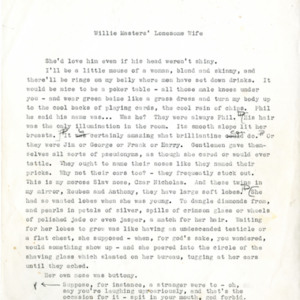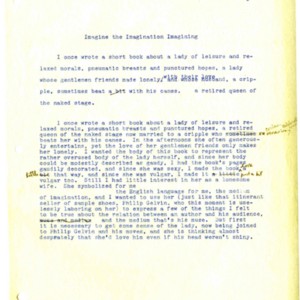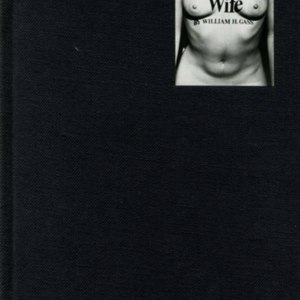Willie Masters' Lonesome Wife
For the metafiction novella Willie Masters' Lonesome Wife, Gass pulled out all the stops on experimenting with language, narration, text, and even the paper itself. He employed a variety of visual devices along with the text to tell parallel story lines in what is essentially an essayistic paean to the pleasures of language. The book, first published in 1968 as a limited-edition, hard-cover supplement to Tri-Quarterly, soon became a postmodern classic, and remains in print.
Along with early typescript and manuscript drafts of Willie Masters' Lonesome Wife, the William H. Gass Papers contain a reading version typescript that Gass used at readings. The text was typed in multiple colors, providing clues into the different speakers or concepts Gass was conveying. The audio recording, from 1971, includes Gass reading excerpts from the book and explaining some of what he was trying to accomplish in it. The pages of typescript drafts reveal some of the early conceptions of the visual effects being worked into the text.



